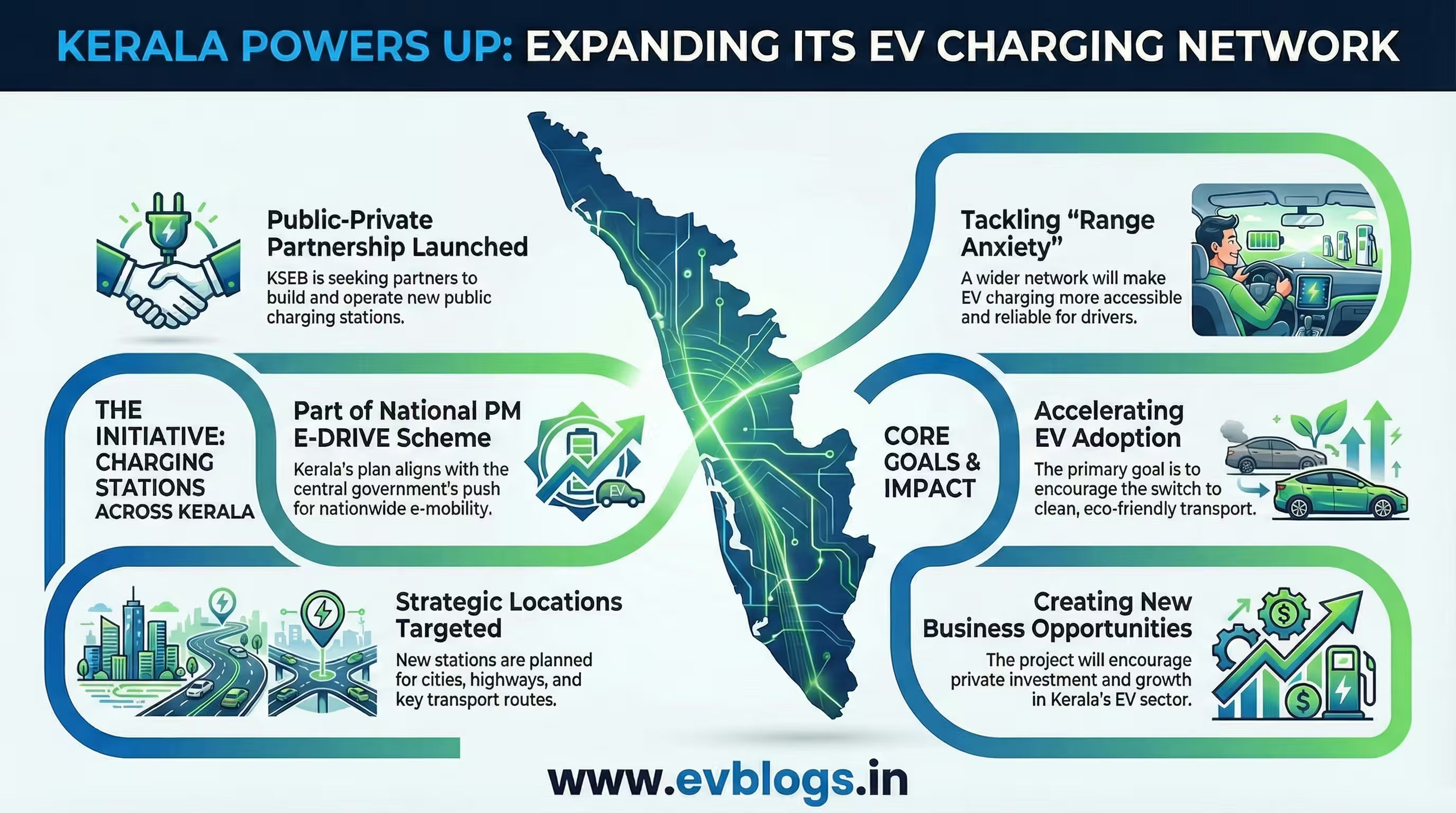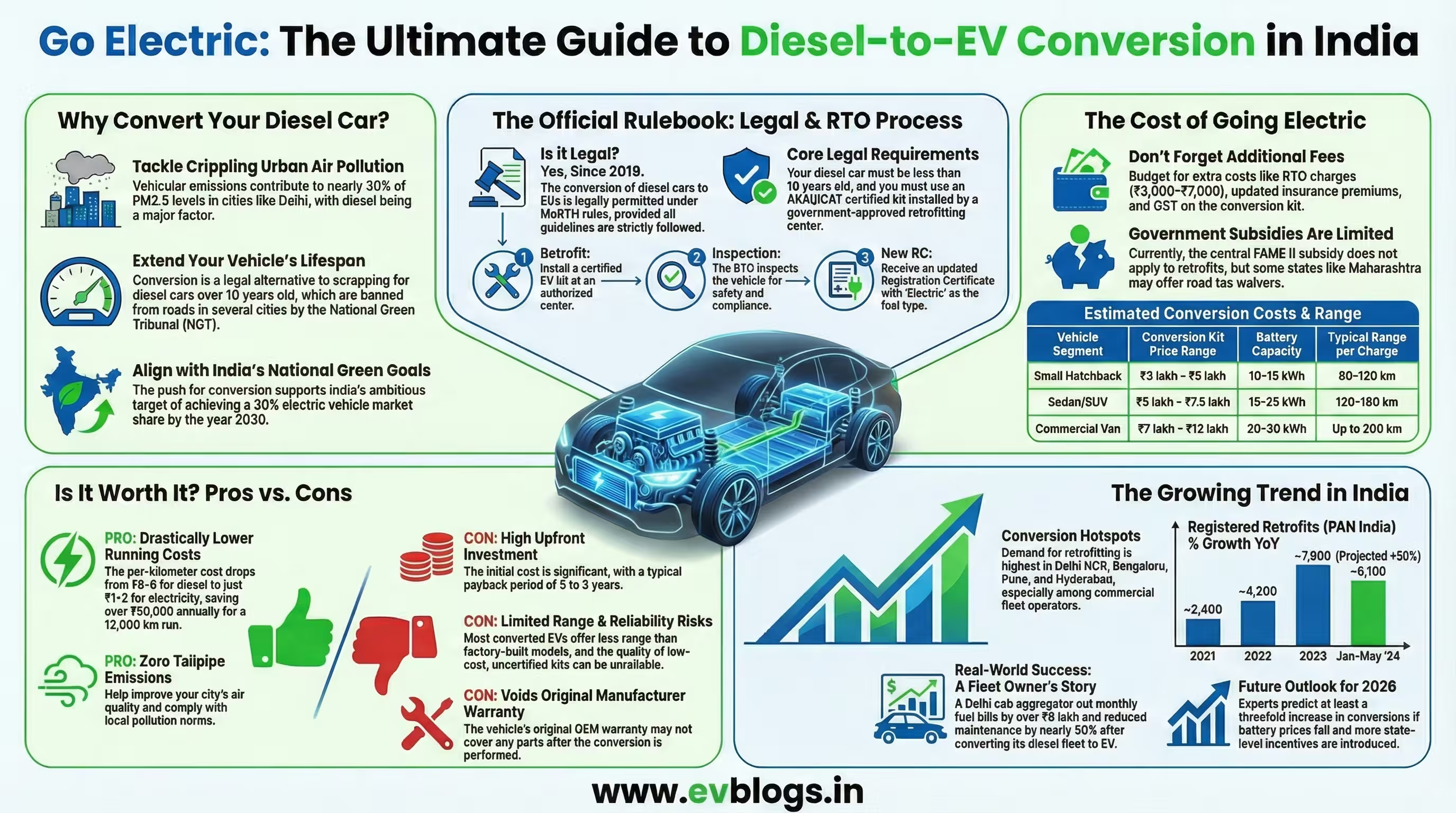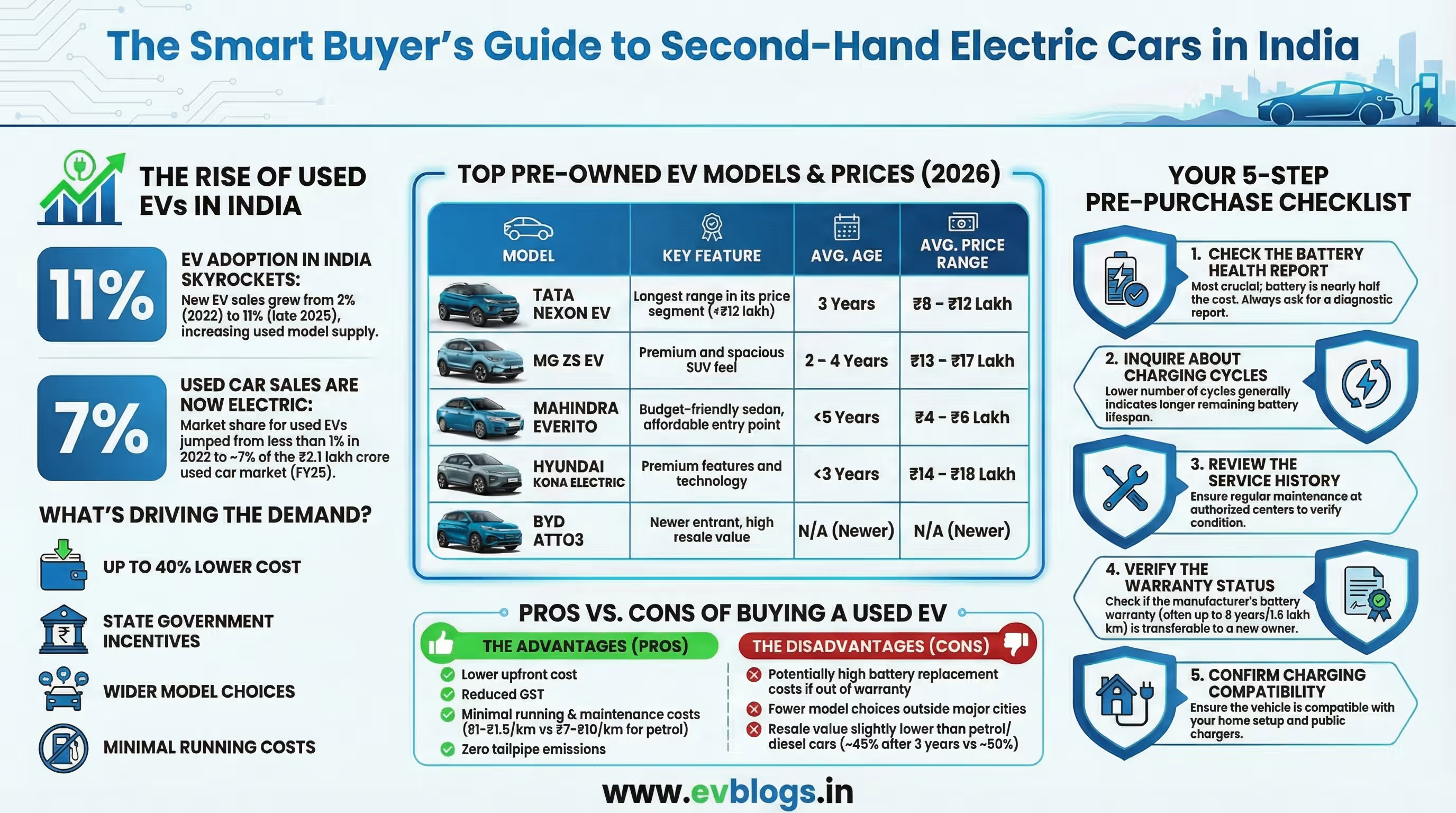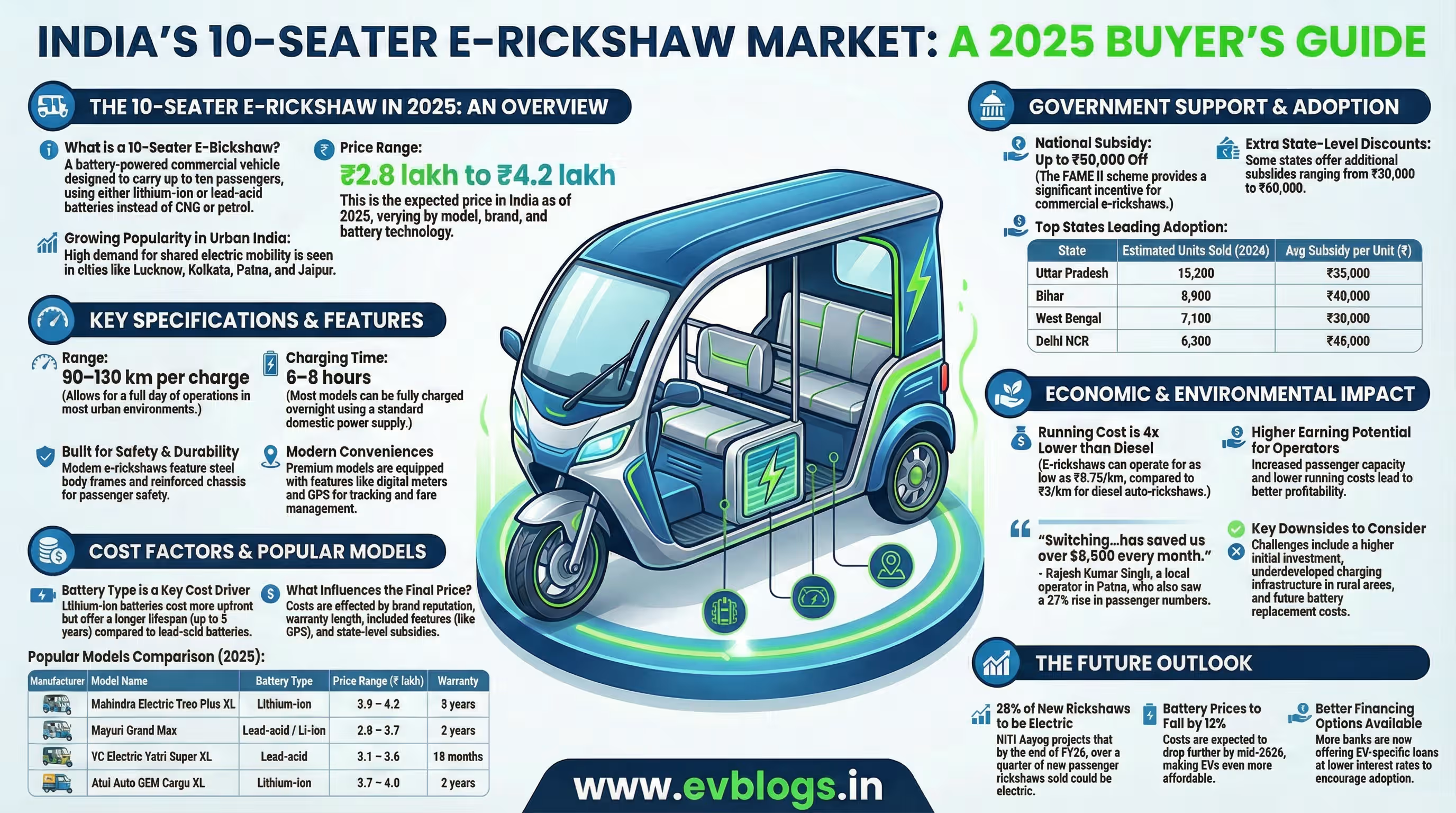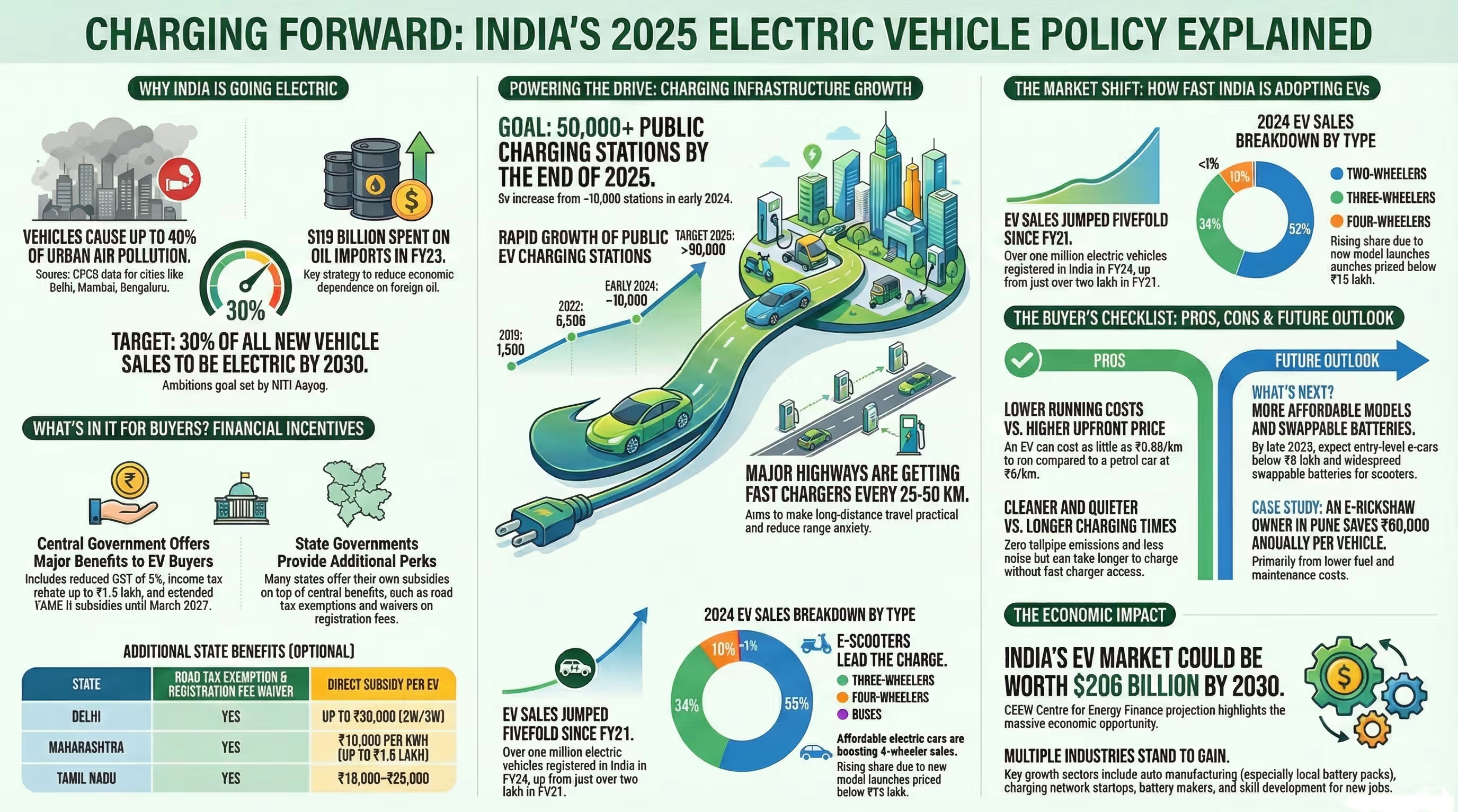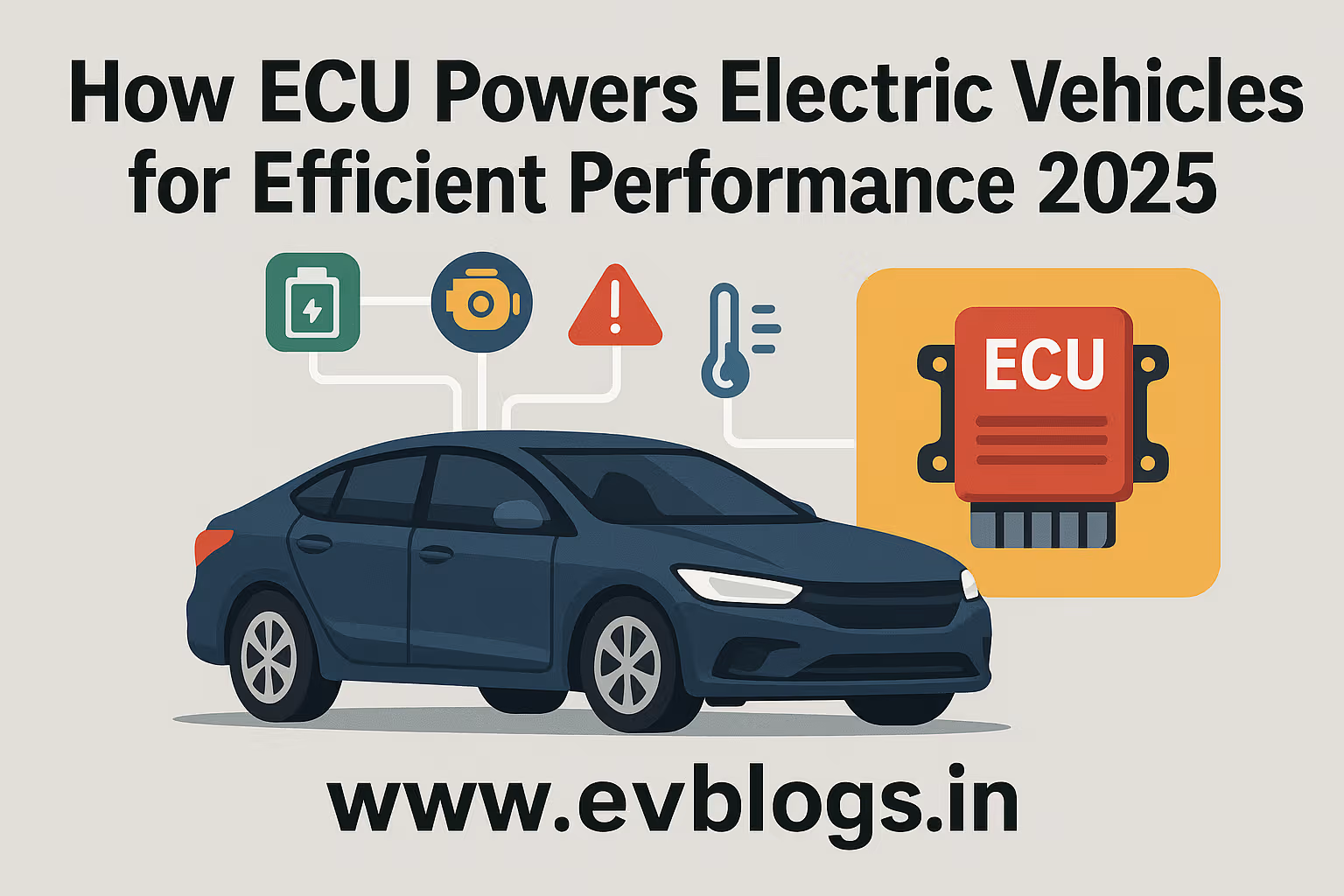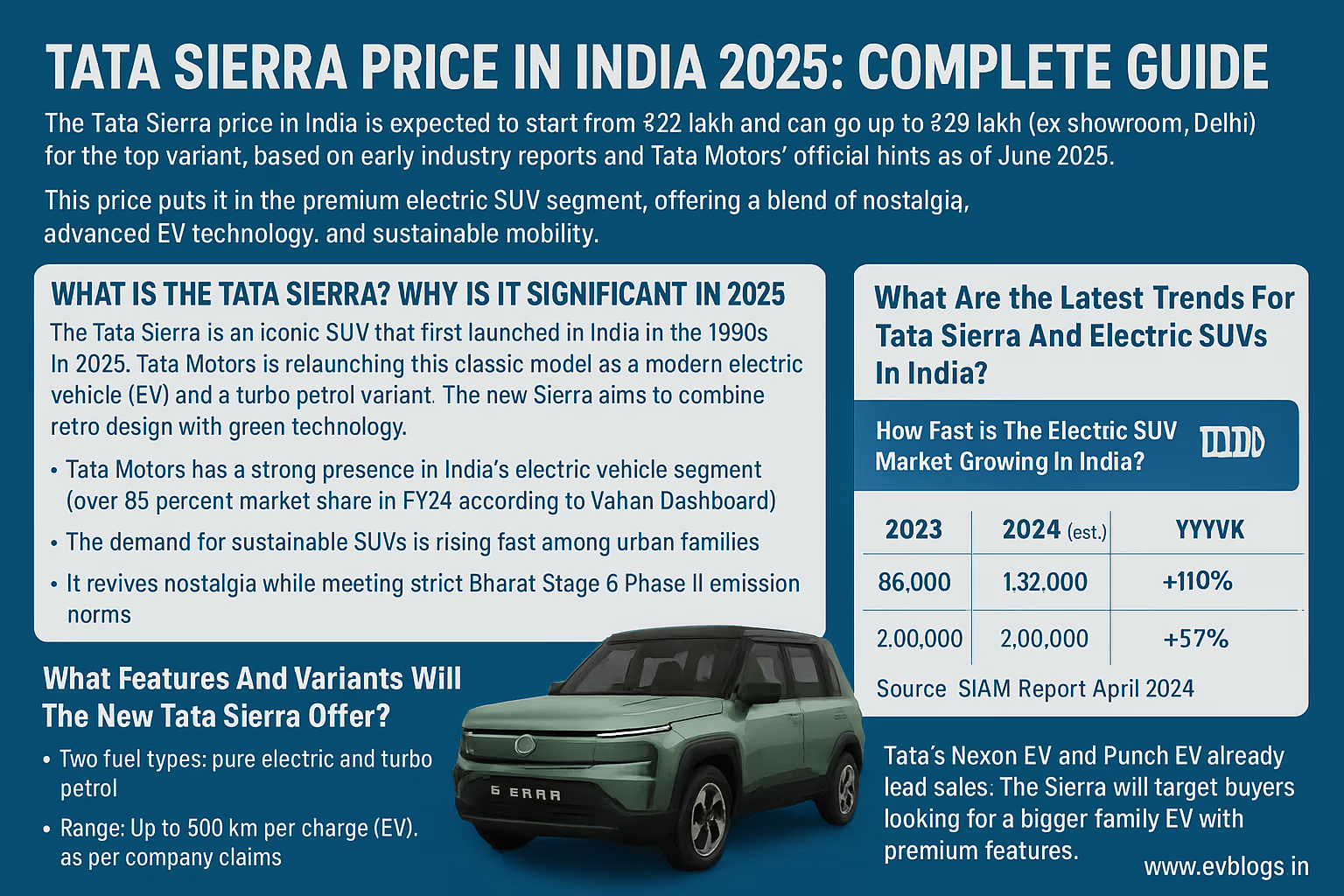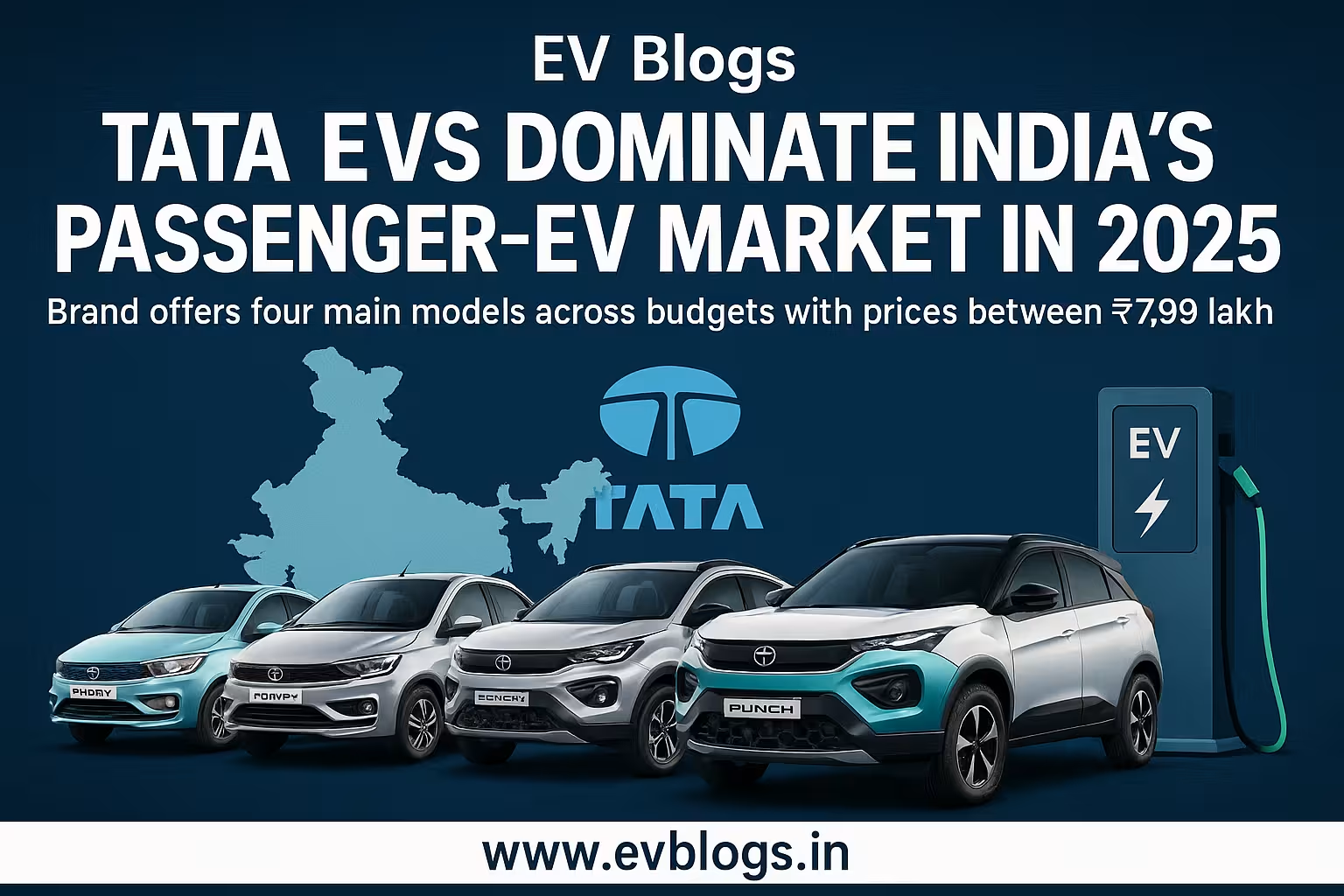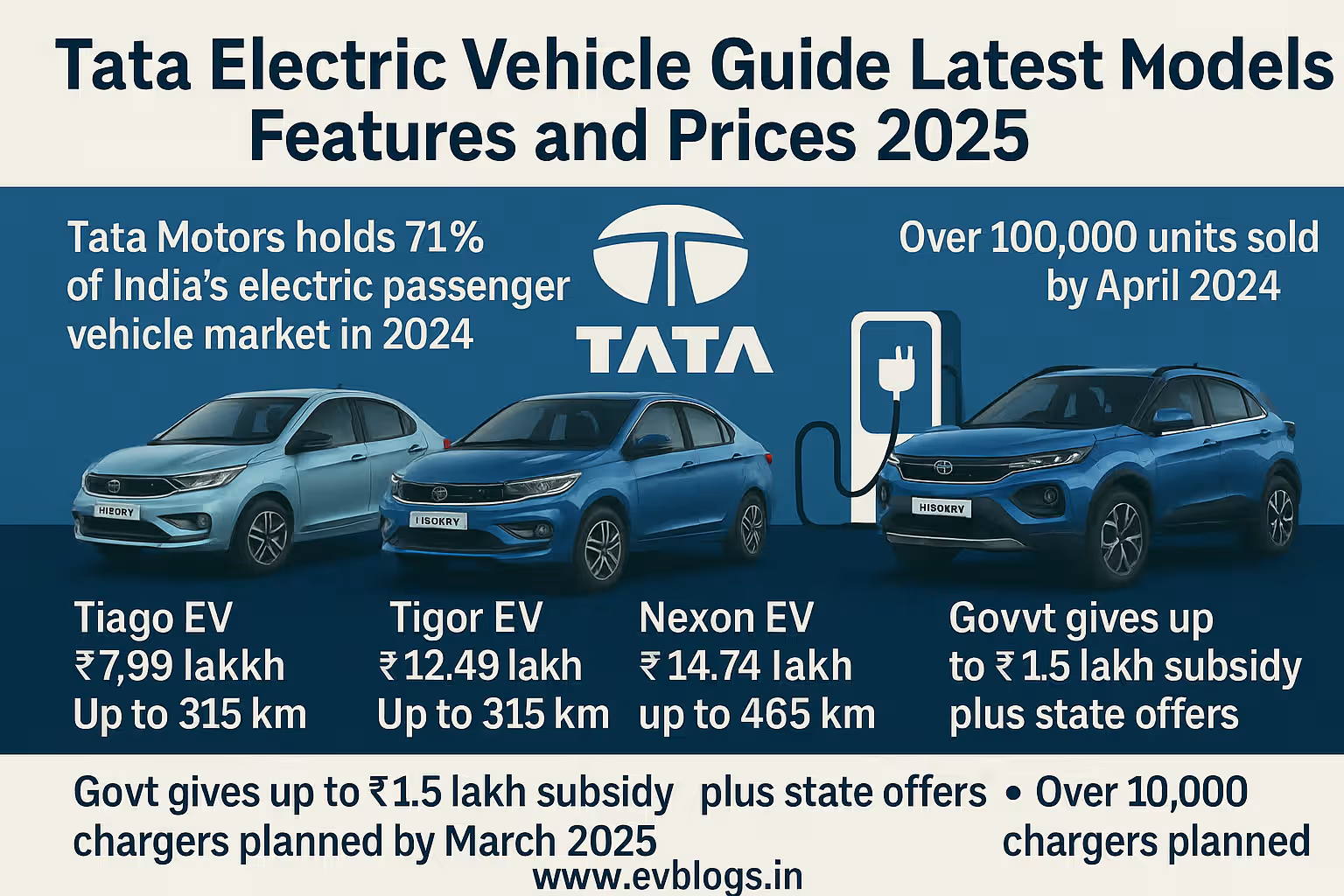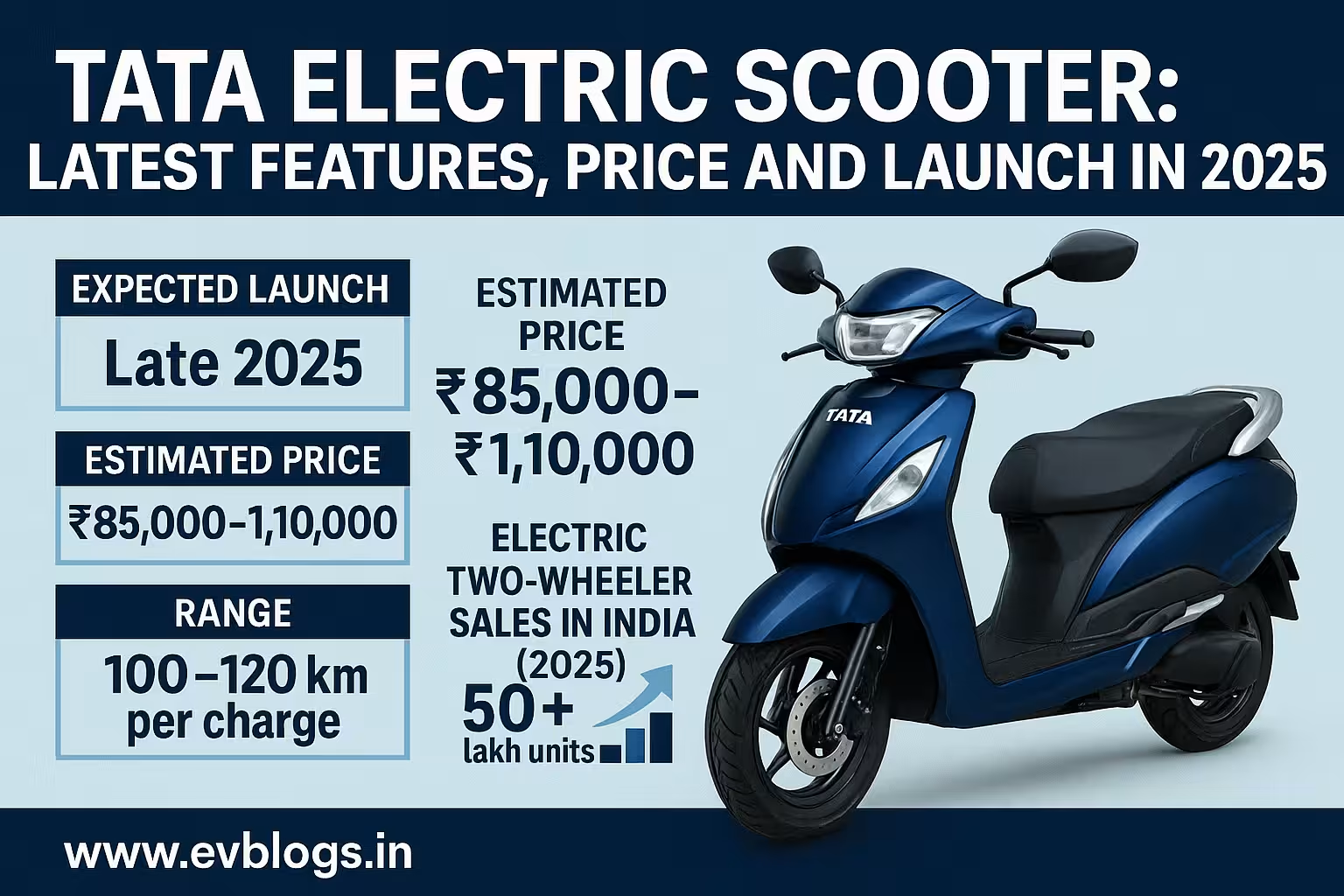Hedhvick Hirav
Hedhvick Hirav is a dedicated EV researcher and editor with over 4 years of experience in India’s growing electric vehicle ecosystem. Their contributions have been recognized in leading sustainability publications and automotive journals.
Summarize & analyze this article with
Choose an AI assistant and open this article directly:
Tip: if the AI doesn’t fetch the page automatically, paste the article URL manually.

Electric Vehicle Subsidy in Meghalaya: A Complete 2025 Guide
Introduction: Why Electric Vehicles Matter in Meghalaya
Meghalaya, nestled in the lush hills of Northeast India, has always been known for its pristine environment and natural beauty. But like much of the country, it faces rising air pollution, mounting fuel costs, and the urgent need to address climate change. In response, the state government has begun to prioritize green mobility—placing a special focus on electric vehicles (EVs).
As we move into 2025, Meghalaya’s electric vehicle subsidy programme is gaining traction among residents looking for affordable, sustainable transportation alternatives. This article provides an up-to-date, comprehensive guide to Meghalaya’s EV subsidy policy: how it works, who qualifies, what the benefits are, and how you can take full advantage as a consumer or business.
Understanding Meghalaya’s Electric Vehicle Policy
Background and Objectives
Meghalaya launched its Electric Vehicle Policy in 2021 with ambitious goals:
- Promote adoption of EVs across all segments—private owners, commercial fleets, public transport.
- Reduce vehicular emissions to improve air quality and lower carbon footprint.
- Create local jobs through EV-related manufacturing and services.
- Build robust charging infrastructure across urban and rural areas.
The subsidy scheme is a core part of this policy—designed to make EVs more accessible by reducing upfront costs.
Key Facts About the Meghalaya EV Subsidy (As of 2025)
| Feature | Details |
|---|---|
| Launch Year | 2021 |
| Administered by | Transport Department, Government of Meghalaya |
| Eligible Vehicles | E-scooters, e-bikes, electric cars, e-rickshaws & commercial EVs |
| Subsidy Amount | Up to Rs. 10,000 per two-wheeler Up to Rs. 60,000 per four-wheeler |
| Target Beneficiaries | Private owners, taxi operators, fleet owners |
| Additional Benefits | Waiver/reduction of road tax & registration fees |
| Application Mode | Primarily online via State Portal or RTO offices |
Note: Subsidy figures are subject to annual revision by the state government.
Who is Eligible? Criteria Explained
General Eligibility Conditions
To avail the Meghalaya EV subsidy in 2025:
- You must be a resident of Meghalaya, holding a valid address proof.
- The vehicle must be purchased from an authorized dealer within Meghalaya.
- Only brand-new EVs with advanced battery technology (Li-ion or equivalent) qualify.
- The vehicle should be registered for use in Meghalaya only.
- Each applicant is typically eligible for one subsidized vehicle per category.
Special Categories
Some specific user groups may get priority or additional support:
- Commercial Fleet Owners: Taxi operators and aggregators may receive enhanced subsidies for bulk purchases.
- Women Entrepreneurs: Certain schemes offer higher incentives for women-led businesses under start-up or empowerment initiatives.
- Public Transport Operators: Bus fleets transitioning to electric receive separate grants.
Exclusions
The subsidy is generally NOT available for:
- Used or retrofitted vehicles
- Vehicles registered outside Meghalaya
- Vehicles with outdated or non-standard battery technologies
Benefits: Why Opt for an Electric Vehicle in Meghalaya?
Direct Financial Incentives
The most immediate benefit is the reduction in purchase price due to state subsidy. For example:
- A typical e-scooter worth Rs. 90,000 could cost you around Rs. 80,000 after subsidy.
- For electric cars (like Tata Nexon EV), buyers can save up to Rs. 60,000 upfront.
Combined with central FAME-II subsidies (if applicable), the overall savings can be substantial.
Tax and Registration Perks
In addition to direct cash incentives:
- Road tax waiver/reduction lowers recurring costs
- Registration fee exemptions make registration smoother and cheaper
- Lower insurance premiums may apply due to state-level policies
Long-Term Savings
Switching to an electric vehicle also reduces running costs dramatically:
| Cost Component | Conventional Vehicle | Electric Vehicle |
|---|---|---|
| Fuel | Petrol/Diesel (~Rs.100/litre) | Electricity (~Rs.2–4/km) |
| Maintenance | High (engine/oil/filters) | Low (fewer moving parts) |
Over five years of ownership, total savings often exceed Rs. 1 lakh compared to petrol/diesel vehicles.
Environmental and Social Impact
Opting for an EV means:
- Reduced tailpipe emissions—cleaner air in cities like Shillong
- Lower noise pollution
- Support for local green jobs as charging networks expand
How To Apply For The Meghalaya EV Subsidy: Step-by-Step Process
Applying for the subsidy is straightforward if you follow these steps:
Step 1: Choose Your Vehicle & Dealer
Select an eligible electric vehicle model from an authorized dealer within Meghalaya. Ask your dealer if they are registered under the state’s subsidy programme.
Step 2: Documentation Preparation
Prepare these documents:
- Aadhaar card/valid ID proof
- Address proof showing residency in Meghalaya
- Recent passport-size photographs
- Purchase invoice/quotation from dealer
- Bank account details/cancelled cheque (for direct transfer)
Step 3: Application Submission
You can apply via:
Online Method:
- Visit the official [Meghalaya State Transport Portal].
- Register/log-in as a new user.
- Fill out the online application form for EV subsidy.
- Upload scanned copies of required documents.
- Submit and note down your application/reference number.
Offline Method:
- Visit your nearest RTO office with all documents.
- Fill out and submit a physical application form available at the counter.
- Receive acknowledgment slip/reference number.
Step 4: Verification & Approval
The Transport Department will verify your documents and eligibility status—this usually takes about 2–4 weeks.
Step 5: Disbursal of Subsidy
Once approved:
- The subsidy amount is transferred directly into your bank account or
- The amount is deducted upfront at point-of-sale (depending on dealership arrangement)
Tip: Confirm with your dealer about which disbursal method applies before making payment!
Practical Tips & Advice for Buyers in Meghalaya (2025)
- Combine State & Central Benefits: Check if your chosen model qualifies under both FAME-II (central) and state subsidies for maximum savings.
- Compare Total Ownership Cost: Factor in electricity tariffs vs fuel prices; many urban areas now have dedicated low-rate night-time charging slots for EVs.
- Check Charging Infrastructure: Shillong and Tura have rapidly growing public charging stations; consider home charger installation if you have private parking.
- Battery Warranty Matters: Look for models offering at least a five-year battery warranty—this ensures peace of mind about long-term performance.
- Monitor Annual Updates: State policies may revise subsidy amounts every financial year based on budget allocation; keep track via official notifications.
Expert Insights: What Local Stakeholders Say
We spoke with industry experts and local business owners on the impact of subsidies:
“Since launch of these incentives, demand for e-scooters among college students has doubled,” says Anita Marak, owner of a Shillong-based dealership.
“Our operational costs dropped by nearly half after shifting our taxi fleet to electric,” reports Biplab Dasgupta from a city taxi aggregator service.
Academic researchers at North-Eastern Hill University highlight that while awareness is rising rapidly among young buyers and urban families, more outreach is needed in rural areas where perceptions about range anxiety persist despite improvements in technology.
Use Cases: Who Stands To Gain?
Here are some practical scenarios where residents benefit most from the subsidy scheme:
- Urban Commuters: Daily travel within Shillong or Tura becomes significantly cheaper with e-scooters or compact EVs—ideal for students or office-goers covering <40 km/day.
- Taxi Operators: With both upfront subsidies and lower running costs/tax perks, switching even part of their fleet yields fast payback periods (~2 years).
- Delivery Start-Ups: E-bikes/e-vans reduce logistics expenses while boosting eco-friendly branding—a competitive edge in food/grocery delivery space.
Comparison: How Does Meghalaya Stack Up Against Other States?
While states like Delhi and Maharashtra offer larger cash subsidies on paper, Meghalaya’s policy stands out due to its ease of access (less paperwork), early adoption incentives for businesses/startups, and targeted support towards public transport electrification—a key concern given hilly terrain challenges unique to Northeast India.
Frequently Asked Questions (FAQ)
Q1: Can I claim both central FAME-II subsidy and Meghalaya state subsidy together?
Yes—if your chosen model qualifies under both schemes’ lists you can avail both benefits cumulatively (subject to approval).
Q2: How long does it take to receive my subsidy?
Typically between 2–4 weeks after successful application verification; delays may occur during peak periods or incomplete documentation.
Q3: Is there any cap on how many vehicles I can buy under this scheme?
Generally one subsidized vehicle per category per applicant; commercial entities/fleet owners may have additional limits based on business size—check latest guidelines.
Q4: Are hybrid vehicles eligible?
No—the scheme only covers fully electric vehicles with advanced battery technology (such as lithium-ion). Hybrids do not qualify as of current policy updates.
Q5: Do I need special permission for home charging installation?
In most cases no—but if you live in an apartment complex or shared property you might require society/NOC approval; single-household connections are simpler but should comply with safety norms set by local DISCOMs/utilities.
Conclusion & Takeaway: Should You Go Electric Now?
Meghalaya’s proactive approach towards incentivizing electric mobility makes this an opportune time for residents and businesses alike to make the switch to cleaner transportation options—not just saving money but contributing meaningfully towards environmental sustainability in one of India’s most ecologically sensitive regions.
If you’re planning a new vehicle purchase in 2025—or operate a commercial fleet—it pays handsomely to explore available subsidies thoroughly before making your decision. Keeping abreast of evolving state policies ensures you maximize financial benefits while supporting local green initiatives that shape a cleaner future for all Meghalayans.
Sources
- Government of Meghalaya - Electric Vehicle Policy
- FAME India Scheme - Ministry of Heavy Industries
- Press Information Bureau Releases on NE State Policies
- Reports from North-Eastern Hill University faculty interviews (2024)
- News coverage from The Shillong Times archives


